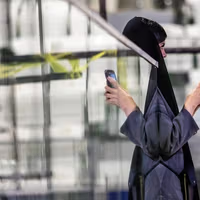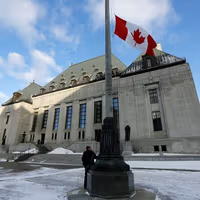Iranian Political Prisoner Accused Of Supporting Israel
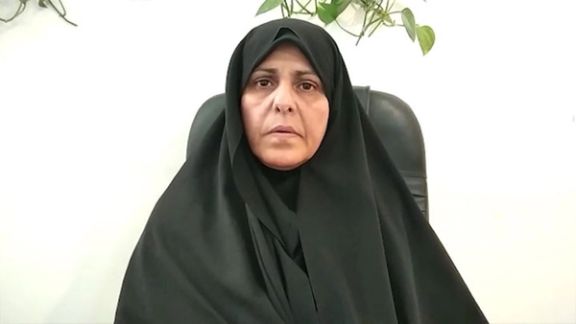
Fatemeh Sepehri, an Iranian political prisoner, has been accused of supporting Israel due to condemning Iran-backed Hamas's atrocities of October 7 which since sparked a regional proxy war.

Fatemeh Sepehri, an Iranian political prisoner, has been accused of supporting Israel due to condemning Iran-backed Hamas's atrocities of October 7 which since sparked a regional proxy war.
Her brother, that Fatemeh participated in a virtual court session from Vakilabad Prison in Mashhad on Saturday, during which the judge accused her of supporting Israel following her condemnation of the attacks which killed at least 1,200 mostly civilians, led to the mass rape and torture of civilians, and saw the kidnap of over 250 hostages to Gaza, dozens of whom have since been killed in captivity.
Imprisoned since September 21, 2022 amid the Women, Life, Freedom protests, her family already fears for her health as she deteriorates in dire prison conditions amid heart disease.
Sepehri faces severe charges, including "collaboration with hostile countries" resulting in a 10-year sentence, "conspiracy and collusion" leading to five years of imprisonment, "insulting the leadership" resulting in two years of imprisonment, and "propaganda against the system" leading to one year of imprisonment.
The Hamas invasion of Israel has since led to military attacks from Iran's proxies regionally. Over 3,100 projectiles have been fired to Israel from Hezbollah in Lebanon, over 35 from Syria, and on Israel's south coast, Yemen's Houthis have waged a maritime blockade, with missiles being fired not only into southern Israel but targeting global shipping, sparking a global crisis.
Iran's proxies in the Middle East have waged over 200 attacks on US infrastructure as punishment for supporting Israel's right to defend itself and a 20+ nation coalition led by the US has been formed to counter the Red Sea blockade.
The Gaza war has seen a significant shift in sentiment among Iranians regarding the Israeli-Palestinian conflict. Expressions of neutrality towards the Israeli-Palestinian conflict and even "Israelophilia" have been observed across Iranian society. The traditional government narrative supporting Hamas and opposing Israel has faced growing dissent, with slogans like "Neither Gaza, nor Lebanon, I will sacrifice my life for Iran" becoming popular among protesters, referring to the Iran-backed proxies currently waging war on the Jewish state.
At a cost of billions of dollars, Iran has long funded its proxies around the region with the goal of eliminating Israel, at the expense of the Iranian population who are witnessing the worst economic and social conditions since the founding of the Islamic Republic.
The regime's attempts to organize large-scale demonstrations in support of Hamas have largely failed, with only small gatherings occurring, primarily among attendees of Friday prayers in major cities, and incentivized by the likes of free food and drinks, easily luring a population in the midst of an economic disaster.
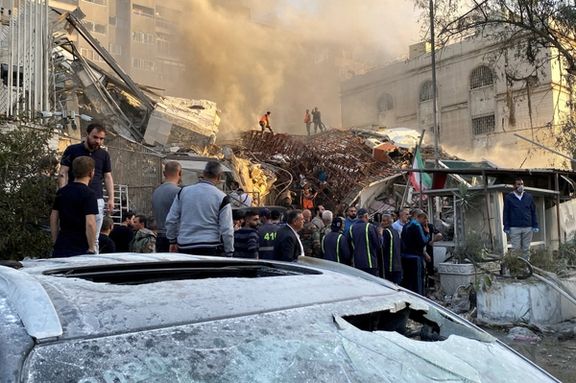
Many regional countries would like to see Iran directly involved in a war with Israel, because it will inflict great damage on the country, two commentators told the media in Tehran.
Government controlled media in Tehran has been abuzz with bellicose statements by some officials and at the same time warnings of remaining cool-headed by many pundits, following Israel’s April 1 air strike that killed seven IRGC officers in the Iranian embassy in Damascus.
The leadership of the Islamic Republic, and particularly Supreme Leader Ali Khamenei face a challenging political dilemma - launch a forceful retaliatory attack and risk a wider war, possibly involving the United States, or exercise restraint and look for less dramatic alternatives. However, Tehran’s proxies around the region, its domestic supporters, and even ordinary Iranians opposed to the government, might see any hesitation as a sign of weakness.
Former chairman of Iranian parliament’s national security and foreign policy committee, Heshmatollah Falahatpisheh, stated on Sunday that, “The interests of all actors in the region today lie in dragging Iran into war. In the current situation, Iran is alone.” He went on to accuse Russia of pursuing the same goal. Falahatpisheh emphasized that war in the Middle East is in the interest of Moscow. While Russia has refused to deliver Sukhoi-35 warplanes to Iran and its air defenses have not confronted Israeli aircraft over Syria, its diplomats engage in provocative rants at the UN Security Council.
The former lawmaker cautioned against any escalation by Iran. “The country should not make a strategic mistake while in isolation. Therefore, while strengthening defensive capabilities, Iran should not fall into the trap and sedition created by [Benjamin] Netanyahu.”
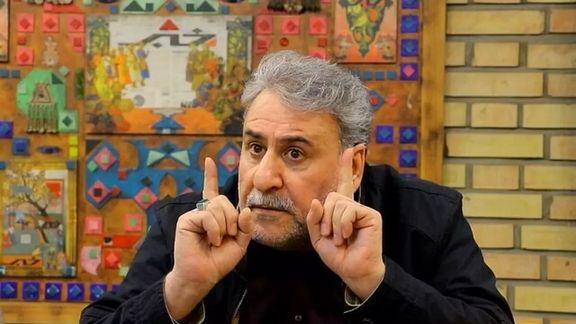
Rahman Ghahremanpour, another well-known commentator, also reiterated that Iran is alone in the region and Israel’s air strike in Damascus was a unique provocation to drag Tehran into a wider war. He also agreed with Falahatpisheh that other countries in the region would like to see Iran entangled in a war that will destroy its military power and weaken it. Although he did not name any country, but the reference could well be directed at Sunni Arab states in the region that have long been tormented by Iran’s expanding influence and armed proxies.
A relatively independent news website, Entekhab, argued that Tehran has four alternatives to choose from in deciding how to respond to Israel.
First, Iran, relying on its missile and drone capabilities, targets military or infrastructure objectives in Israel in retaliatory attacks. While punishing Israel, it will demonstrate its missile power and deterrent capability at the regional and international levels.
Second, in a tit-for-tat fashion Iran targets an Israeli diplomatic mission in one of the regional countries, thus demonstrating a proportional response.
Third, Iran, relying on the operational capabilities and drone power of its regional proxy groups, carries out targeted and impactful attacks on Israeli military bases and critical centers, in indirect retaliation.
Fourth, to avoid regional escalation, Iran refrains from any immediate response, instead adopting strategic patience, and engaging in a war of psychological attrition against Israel, while preserving its military power.
Entekhab concluded that considering many statements by officials and influential figures in the Iranian regime, it is safe to assume that Tehran has adopted that latter option.

A social researcher in Iran says the significant increase in emigration among young professionals in 2023 is due to their loss of hope in the prospects of government change and reforms.
“The 140% increase in the migration of young professionals in the past year … can be seen as an exit strategy resulting from loss of hope in [voluntary] change and reform in the government,” Fatemeh Mousavi, sociologist and social researcher, told Khabar Online news website in an interview Tuesday.
It appears that for many Iranians from diverse backgrounds, hope in the prospects of positive change in the country have been lost – especially for the younger generation seeing emigration as the only path toward a more promising life.
A recent telephone poll conducted by US-based Statis Consulting reveals that nearly half of Iranian youth aspire to leave the country, driven by a prevailing sense of pessimism regarding their future in their homeland.
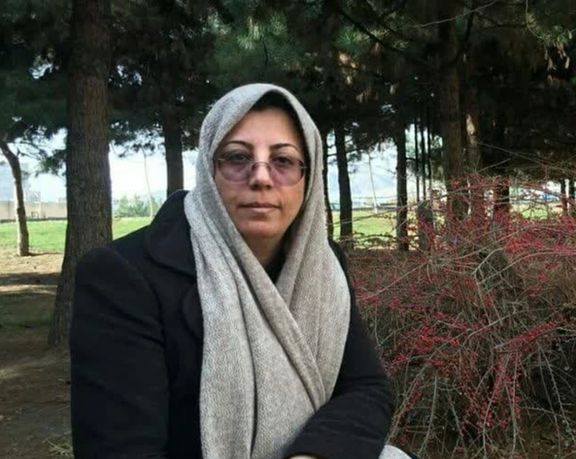
Saeid Moidfar, chairman of the Iranian Sociological Association, recently warned that Iran is on the brink of a significant wave of emigration. Iranians perceive a bleak future in the country, with worsening economic and social conditions, alongside escalating corruption and crime.
According to Mousavi, Iranians had been anticipating the government to initiate gradual reforms over the past twelve months in response to the protests of 2022-2023.
“It became clear that the government does not intend to reform its authoritarian attitude and has even hastened its enforcement from the beginning of the summer, when the approval of the Hijab and Chastity bill was proposed, until the end of the year when the previous process of extensive purification [of the political structure] and disqualification [of candidates], even for independent persons, continued. We saw the outcome in people's [refusal to] participate in the parliamentary elections,” she said.
Iran’s parliamentary and Assembly of Experts elections saw a record low voter turnout this year.
“In the past year, not only women's demands were not met, but the political conflict over the mandatory hijab also increased … The political establishment continues to fine women for not wearing the hijab by confiscating cars and sealing businesses beyond legal premises. This is an exhausting battle that consumes the limited resources of the government in the police force, fuels social dissatisfaction, and has caused even some religious people and those who wear the chador (long black veil) to oppose the mandatory hijab,” Mousavi who says half of young professionals leaving the country are women told Khabar Online.
Experts have long been warning about the dire consequences of the emigration of skilled workforce, like medical professionals, but government officials have historically denied the importance of the matter or ignored the warnings.
Nevertheless, in February authorities said new measures had been taken to prevent the emigration of experts that involved the passport and immigration authority.
In a recent article, EcoIran, an economic news website, highlighted that workforce emigration is no longer limited to physical relocation. The rise of virtual citizenship and remote work, especially during and after the pandemic, has led to a significant increase in digital emigration among Iranians.
This shift, the article said, has led to the “migration of the activities of creative and expert workforce to international businesses”, the article said while warning that the growing desire to emigrate serves as an “alarm bell” that has been ringing for several years, yet remains largely unheeded.
The IMO, a research institute established during then-President Rouhani’s second term, at Sharif University of Technology, tracks data and generates analyses on emigration, with a particular focus on informing policymakers.
In its 2022 report, Iran Migration Observatory (IMO) stated that Iran ranked 17th among countries with the highest number of individuals seeking education abroad and 54th among those with the highest emigration rates.
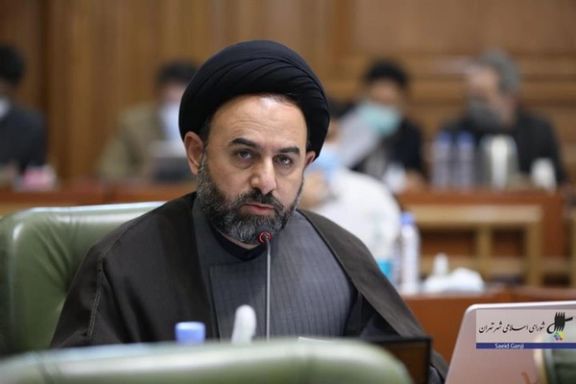
Mohammad Aghamiri, a member of Tehran City Council, has ignited controversy by advocating the construction of at least one thousand additional mosques in the Iranian capital.
Aghamiri's statement comes amidst heightened criticism over a government initiative to convert parks into mosque grounds, drawing ire from citizens and sparking a broader debate on the allocation of public funds and urban planning.
Currently, Tehran hosts 2,100 mosques, with the highest concentration located in the southern part of the city, according to Aghamiri. However, he claimed that “while the municipality assists in construction efforts, it does not directly undertake mosque building projects.”
The proposal has garnered public outrage, particularly following the revelation of construction plans in Qeytarieh Park, situated in northern Tehran. Images circulated online depicting the fencing off of park sections and tree removals.
Critics argue that parks serve as crucial gathering spaces for communities and are essential for public recreation, while mosques, once viewed as centers of worship, are increasingly being perceived as instruments of state control and suppression. Reports suggest that during recent protests, mosques have been utilized as staging grounds for security forces, exacerbating concerns over civil liberties and government overreach.
In response to mounting dissent, concerned Iranians have launched an online petition urging intervention from key authorities to halt the mosque construction projects. The petition underscores Tehran's pressing environmental challenges, such as air pollution, and stresses the need for prioritizing green spaces and tree preservation.
The controversy unfolds against a backdrop of declining mosque attendance nationwide, as highlighted by senior clerics and government officials. The closure of thousands of mosques due to dwindling congregations has raised questions about the efficacy of expanding mosque infrastructure in the face of shifting societal dynamics.
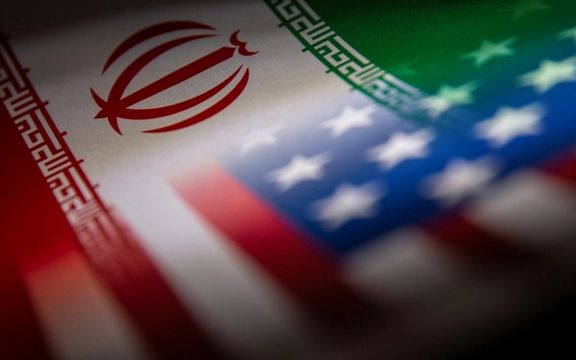
Analysis - The inconsistency of US policy on Iran has enabled Tehran to boost its revenue and rapidly expand its nuclear program, while emboldening it to brutalize the Iranian people.
A look at the data on Iran’s oil exports, military revenue, nuclear advancements, and the number of executions in Iran show a trend. When the US posture towards Iran is softer, the regime sells more oil, has more money to spend on terrorism, expands its nuclear program, and brutalizes more Iranians.
Of course, correlation doesn’t necessarily equal causation. And there is no doubt that internal political factors within the regime in Iran, among other things, are a factor. So, let’s break down the data and some of the counter arguments.
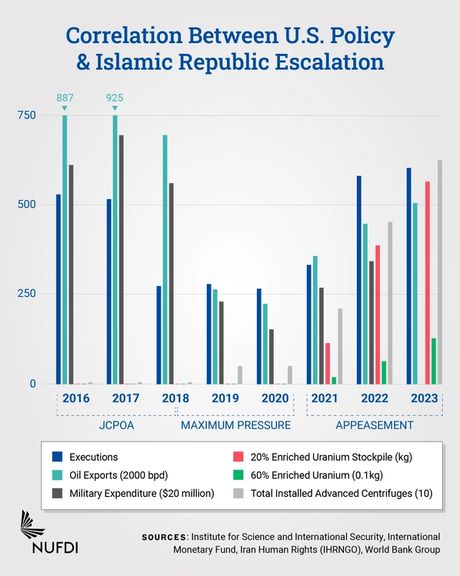
Oil Exports
Of the data shown in the graph, Iranian oil exports is the most directly tied to US policy. From 2015 until the United States withdrew from the Joint Comprehensive Plan of Action (JCPOA), Iran, on average, exported roughly 1.6 million barrels per day (bpd). While the deal temporarily slowed Iran’s nuclear advancements, as will be discussed later, it did so at the cost of boosting the regime’s economy and oil sales through sanctions relief.
After the United States withdrew from the JCPOA and reinstated sanctions, oil exports sunk to a low of 440,000 bpd in 2020, with an average of 790,062 bpd during the “maximum pressure” years. US led sanctions were effective in limiting the number of countries able to purchase Iranian oil. However, when the new US administration took office in 2021 with the intention of re-entering the JCPOA, they abandoned the “maximum pressure” sanctions for a posture of appeasement, which in this instance refers to the United States relieving sanctions and diplomatic pressure on the Islamic Republic in the hopes that the regime would agree to a nuclear deal. The result is evident in Iran’s oil exports, which have risen back up to nearly 1.1 million bpd in 2024 and have averaged 925,562 bpd since 2015.
Though US sanctions may still be in place, that doesn’t mean they are being enforced. For example, the US reportedly agreed to a diplomatic arrangement with Iran in 2023 that included “stepping back from seizing Iranian oil cargoes.” According to the advocacy group, United Against a Nuclear Iran, the Islamic Republic had generated approximately $80 billion in revenue from oil sales between 2021-2023, hitting a five-year high in 2023. As noted in a recent Congressional Research Service (CRS) report, observers have speculated “competing global interests, a desire not to escalate tensions with China, or the pursuit of lower petroleum prices may have also informed the Biden Administration’s Iran sanctions policy in a way that de-prioritized the enforcement of sanctions.”

Military expenditure
Notable data points include a high of approximately $13.9 billion in 2017 in military expenditures, a low of roughly $3 billion in 2020, and a rise back to nearly $6.9 billion in 2022, likely to be higher in 2023, for which data is not out yet.
The explanation for the fluctuation in Iran’s military expenditure mirrors that of Iran’s oil exports. Relieving or not enforcing sanctions that target key industries which produce revenue for the Islamic Republic gives the regime more money to spend – and Tehran will always prioritize spending on its military over the Iranian people.
Recent US policy on Iran has operated under the belief that the United States can dictate how the regime spends its money. This has been the justification for many of the sanctions waivers the US has granted to allow money to flow from countries like Iraq into the regime’s pockets, as Biden administration officials claim the money can only be used for humanitarian purposes. The flaw in this logic, including the inherent fungibility of money, has been extensively written about.

Executions
Of the data in the graph, executions in Iran are the most influenced by internal political factors within the Islamic Republic despite their rise and fall aligning with US policy stances. This includes the transition from Iranian President Hassan Rouhani to President Ebrahim Raisi in 2021, as Rouhani’s tenure included an August 2017 amendment to the Islamic Republic’s narcotics law that raised the bar for a mandatory death sentence. This was likely a factor in the decreased execution rate until Rouhani’s successor, President Raisi, took office in August of 2021.
However, this need not diminish the effect US policy has on executions in Iran and Iran’s broader human rights abuses of the Iranian people. Under President Obama, the US adopted a policy of non-interference regarding internal Iranian matters, particularly during the 2009 Iranian Green Movement protests. Obama's refusal to comment significantly on the protests signaled indifference. This approach was likely interpreted by the Islamic Republic regime as a tacit green light to deal with internal dissent as it saw fit, potentially contributing to a harsher domestic policy.
Conversely, the Trump administration took a markedly different approach. President Trump was personally a vocal critic of Iran’s human rights record and his administration imposed additional human rights sanctions on the Islamic Republic. The president of the United States regularly putting out statements letting the regime know “we're watching you” likely factored into the Tehran’s calculations on domestic policy, potentially influencing the number of executions.
Finally, the data suggests a shift back to increased executions under the Biden administration. Starting in 2021, the United States’ weaker posture towards the Islamic Republic, characterized by attempts to offer concessions to the regime in exchange for re-entering the JCPOA, emboldened the regime to increasingly suppress internal dissent without fearing international repercussions. This period correlates with an increase in executions.
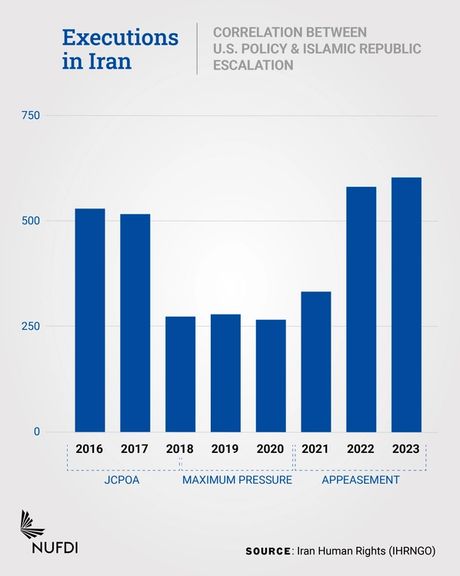
Nuclear Advancements
Of course, the JCPOA temporarily restricted Iran’s nuclear program. The nuclear deal is why Iran’s stockpile of highly enriched uranium was nonexistent in the beginning of the graph. As already noted, this temporary feat was accomplished by sacrificing pressure constraining other key aspects of the Islamic Republic’s malign activities.
Although the United States withdrew from the JCPOA in 2018, Iran started producing 20 and 60 percent uranium only after November 2020. Similarly, while Iran did begin increasing its amount of installed advanced centrifuges during the “maximum pressure” years – from 41 in 2018 to 512 in 2020 – that increase was rapidly accelerated after the 2020 election in the United States, jumping to over 2,000 in 2021 and 6,200 as of 2023.
It's fair to debate whether withdrawing from the JCPOA was the right call, but the answer is irrelevant to this discussion. There are two realities every policy maker should accept: (1) The JCPOA is dead; (2) The Islamic Republic has shown no interest in reaching a new, reasonable nuclear deal that would meaningfully push back its nuclear breakout time. This data suggests that, so long as these are the realities, the United States has a better chance of thwarting the expansion of Iran’s nuclear program through pressure than they do through appeasement.
Critics will note that Iran did begin producing lower enriched uranium, beyond the JCPOA-mandated limit, prior to 2021. 20 and 60 percent enriched uranium, as well as installed advanced centrifuges, are better measures of Iran’s nuclear advancements as they are stronger indicators of Iran’s nuclear breakout time.
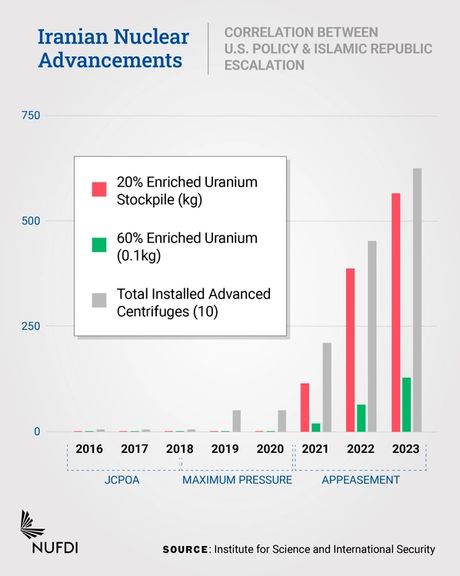
Altogether
The juxtaposition of these various measurements shows that US policy on Iran influences both American national security and the welfare of the Iranian people. Therefore, both aspects should be integral to the formulation of any future US strategy regarding Iran. While applying 'maximum pressure' on the regime has yielded positive outcomes, providing 'maximum support' to the Iranian people is an essential complementary measure.
This is not about politicians nor personalities, but rather policy – you may note that the time periods in the graph are divided based on US policy on Iran, not US presidents. The United States needs a bipartisan policy on Iran, one that has a clear long-term goal and doesn’t dramatically shift every few years. Such a policy should not only aim to curtail Iran’s nuclear ambitions and support for terrorism but also seek to uphold human rights and democratic values.
The data presented suggests that a US policy characterized by consistency, clarity, and firmness is more likely to restrain Iran's adversarial actions than one marked by conciliation and appeasement. As we move forward, it is crucial for policymakers to internalize the lessons learned from past engagements with Iran, crafting a coherent strategy that addresses the multifaceted nature of the challenge at hand.
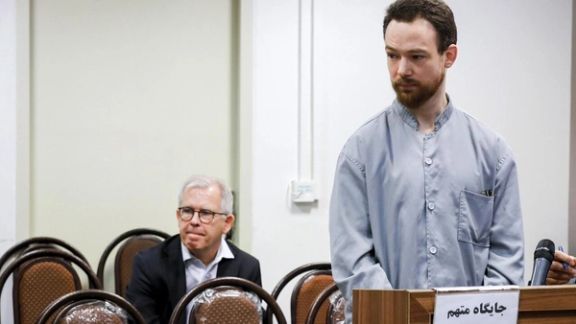
The Swedish ministry of foreign affairs has reiterated its commitment to closely monitor the cases of Johan Floderus and Ahmadreza Jalali, two citizens currently imprisoned in Iran.
In response to inquiries from Iran International, the ministry said consular efforts to assess their conditions remain ongoing, with intensified scrutiny.
Swedish citizens have been advised to exercise caution and refrain from traveling to Iran given the risk of arbitrary detention.
Additionally, the ministry announced that temporary caretakers are overseeing the responsibilities of the charge d'affaires at both the Swedish Embassy in Tehran and the Iranian Embassy in Stockholm.
Relations between Iran and Sweden have become increasingly strained in recent years, particularly following the detention, trial, and conviction of Hamid Nouri, a former judicial official of the Islamic Republic, on charges related to the 1988 massacre of political prisoners in Iran.
Since legal proceedings began against Nouri in Sweden, Tehran has retaliated against Stockholm, leading to the detention of several Swedish nationals in Iran.
Johan Floderus, a Swedish citizen and European Union diplomat, has been held since April 2022 on allegations of "gathering information for Israel under covert projects." His detention is viewed by political and human rights activists as an attempt to pressure the Swedish government regarding Nouri's release.
Ahmadreza Jalali, an Iranian-Swedish physician and researcher, was arrested in 2016 on charges of "espionage." Despite denying the accusations, he was sentenced to death by Abolghassem Salavati, a judge of the Revolutionary Court, with the sentence upheld by the Supreme Court.
Recent reports indicate that two additional Swedish nationals have been detained by Iranian security authorities in recent months.
The Islamic Republic's practice of arbitrarily detaining foreign nationals or dual citizens underscores its pressure tactics on Western countries to meet its demands.

